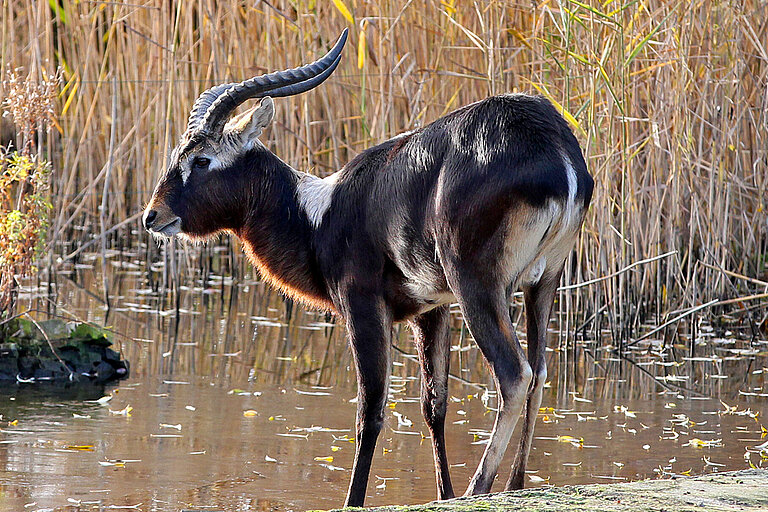Did you know?
Nile lechwes hide away in swamp habitats with dense vegetation. They also forage in the water for swamp grasses and water plants. You can tell that they are well adapted to swamps by their oily, extremely water-repellent skin and their spreadable claws that prevent them from sinking into boggy ground. It is hard to differentiate the females from one another due to external markings. The buck, on the other hand has horns and a striking, white neck spot. In their main distribution range in South Sudan this species is endangered as a result of habitat degradation from oil exploitation.
European Endangered species Program
This animal is managed by the European Association of Zoos and Aquaria (EAZA) under the European Endangered species Program.

Characteristics
| Classification | Order: even-toed ungulates, Genus: Kobus |
|---|---|
| Diet | Grasses and aquatic plants |
| Habitat | Swampy floodplains along the White Nile in Southern Sudan (the Sudd region) |
| Reproduction | Mating in spring (all year round in captivity); gestation period: ca. 235 days, one offspring; suckling period: 6–8 months; sexual maturity at 2 years; maximum life span: ca. 20 years |
Status according to Red List
More information you will get on the web page of the IUCN Red List.








